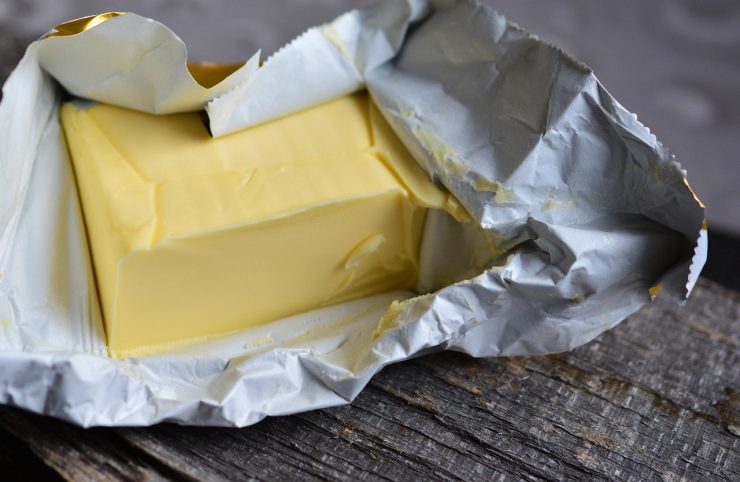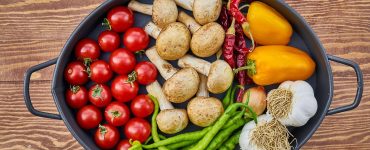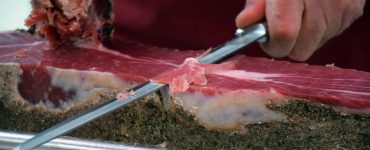Ghee is essentially a type of clarified butter that has been used in Indian cooking and Ayurvedic medicine for centuries. Originally, it was created to provide a shelf-stable form of butter that wouldn’t spoil in warm climates—long before refrigeration was common.
When butter melts, it naturally separates into a clear golden liquid and white solids. Those white bits are the milk solids, and ghee is the result of removing both those and the small amount of water in butter, leaving behind only the clear, golden fat.
What Makes Ghee Unique?
Once the milk solids and water are removed, ghee becomes shelf-stable and can be stored at room temperature for weeks. It behaves similarly to coconut oil, solidifying when it’s cool and staying stable in warmer conditions.
In Ayurveda, ghee is known as a “yogavahi”—an agent that helps deliver the benefits of herbs deeply into the body’s tissues. It’s not just a cooking fat; it’s also a traditional carrier of wellness.
How Ghee Is Made
The process is simple: butter is gently heated until the water evaporates and the milk solids sink and begin to brown. The remaining clear fat is then strained and stored, leaving behind a pure, golden oil.
Ghee vs. Butter: What’s the Difference?
Nutritionally, ghee and butter are similar. Ghee has slightly more fat and calories since the water content is removed. But the main difference lies in its lack of casein and lactose—compounds found in dairy that some people are sensitive to. This makes ghee a great option for those who are lactose intolerant or have mild dairy sensitivities.
Both butter and ghee contain beneficial fats like butyric acid and conjugated linoleic acid (CLA). Butyric acid supports gut health, reduces inflammation, and may even assist with weight management. CLA has been shown to support fat loss and reduce inflammation as well.
There’s some debate over whether ghee has more or less butyric acid than butter, but in practice, both are good sources. For an extra boost in butyrate, including resistant starch in the diet can also help.
Butter and ghee also provide small amounts of fat-soluble vitamins A, D, E, and K, especially when they’re made from grass-fed dairy.
Cooking with Ghee
While butter works well for many dishes, it’s more likely to burn at high temperatures due to its milk solids. Ghee, with its higher smoke point of about 485°F (250°C), is better suited for high-heat cooking such as sautéing or frying. It’s also more stable, making it less likely to produce harmful compounds like acrylamide when heated.
Flavor and Culinary Uses
Ghee has a rich, nutty taste that pairs especially well with bold spices like turmeric and curry. It enhances fat-soluble flavors and is commonly used in Indian and Thai cuisine. Butter, with its creamy, slightly sweet flavor, works best for finishing dishes or baking.
Health Considerations
Both ghee and butter are healthy fats when used in moderation. They’re high in saturated fat, which recent research suggests isn’t necessarily harmful for most people. However, for individuals concerned about cholesterol, it’s important to keep an eye on overall diet—especially added sugars and refined carbs, which tend to impact cholesterol more than fat.
Because ghee is cooked longer, it may contain some oxidized cholesterol, a form of cholesterol that has been associated with higher cardiovascular risk. Butter does not undergo this heating process, so it doesn’t carry the same concern.
Summary: Butter or Ghee?
-
Ghee: Better for high-heat cooking, dairy-free, long shelf life, rich in nutrients, but may contain oxidized cholesterol.
-
Butter: Slightly lower in fat, may contain more butyrate, great flavor, but less heat-stable.
Both options can be part of a healthy diet. Use ghee for cooking and butter for finishing dishes or baking—and enjoy the benefits of both.
How to Make Ghee at Home
Making ghee is straightforward:
-
Melt 1 lb of grass-fed butter in a medium pan over low to medium heat.
-
Let it simmer uncovered. The butter will foam and sputter as the water evaporates.
-
After a while, the milk solids will sink and begin to brown. The liquid should become a clear golden color.
-
Once bubbling slows and the butter is clear, remove from heat and allow to cool slightly.
-
Strain through a fine mesh or cheesecloth into a clean, dry jar.
-
Store at room temperature. Just be sure to avoid introducing moisture into the jar to keep it shelf-stable.
Ghee is a flavorful, nutrient-rich cooking fat that adds depth to meals and offers a number of health benefits. It’s worth keeping on hand in any kitchen.











